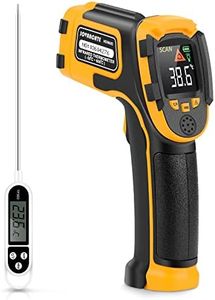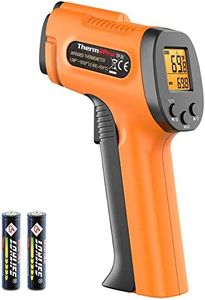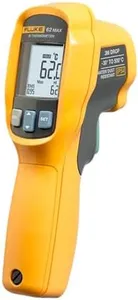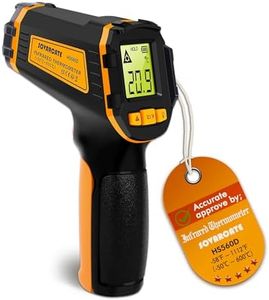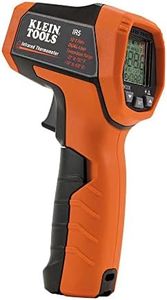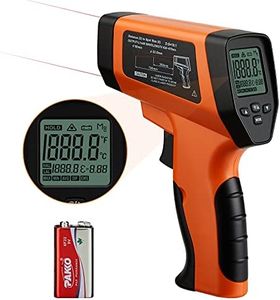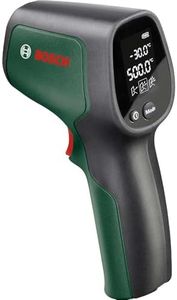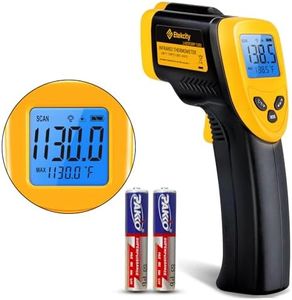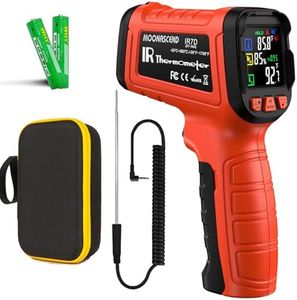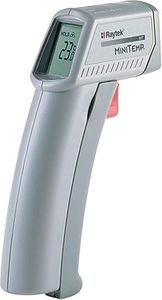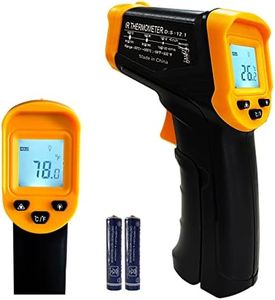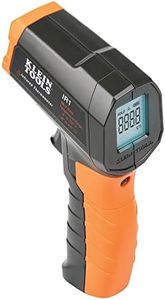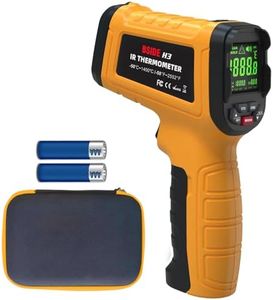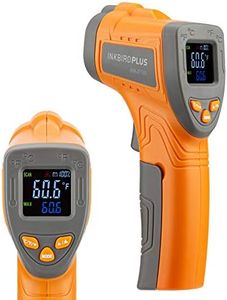We Use CookiesWe use cookies to enhance the security, performance,
functionality and for analytical and promotional activities. By continuing to browse this site you
are agreeing to our privacy policy
10 Best Infrared Temperature Guns
From leading brands and best sellers available on the web.Buying Guide for the Best Infrared Temperature Guns
Infrared temperature guns, often called IR thermometers, are handy devices for quick, contactless temperature measurements. They’re popular in kitchens, workshops, HVAC, and even some health applications. Choosing the best fit for your needs involves understanding the different features and how they impact performance. By learning about core specifications, you can confidently select an IR thermometer that matches how and where you’ll use it.Temperature RangeThe temperature range determines the lowest and highest temperatures the IR gun can measure. This is important because some uses, like checking pizza ovens or engine blocks, require guns that reach higher temperatures, while others, like household tasks, don’t need as broad a range. Entry-level models often cover basic ranges suitable for home or simple kitchen tasks. Middle-range models go higher, appropriate for automotive or industrial needs. High-end guns offer extremely broad ranges, specialized for harsh environments. To pick the right one, consider the max and min temperatures you expect to measure—choose a gun that covers these easily.
Distance-to-Spot Ratio (D:S Ratio)The D:S ratio describes how far you can be from the target and still accurately measure a small spot. A higher ratio means you can get an accurate reading from farther away or measure smaller areas. For example, a D:S ratio of 12:1 means at 12 feet away, you’re measuring a one-foot-wide spot. For close-up work like food safety or home use, a low to medium ratio is fine. For industrial tasks or hard-to-reach places, a higher ratio lets you measure in tight spots or from a safe distance. Choose based on how far you’ll need to be from what you’re measuring.
Emissivity AdjustmentEmissivity is a setting that adjusts for how well a surface emits infrared energy; different materials radiate heat differently, which can affect accuracy. Some IR guns have fixed emissivity suitable for most organic surfaces, while others let you adjust it for metals, glass, or other materials. If you’ll only measure standard items like food or drywall, fixed emissivity works. But if you plan to use the thermometer on a variety of surfaces, getting adjustable emissivity ensures better accuracy. Picking the right one depends on the types of materials you’ll be measuring most often.
AccuracyAccuracy tells you how close the reading will be compared to the actual temperature. Basic models have a wider margin of error and are fine for rough checks, while more precise models are needed where small differences matter, such as in science or calibration tasks. Consider what tasks you need—if you need just an estimate, a less precise unit is okay; if you require confident readings for safety or scientific reasons, prioritize higher accuracy.
Response TimeResponse time refers to how quickly the device provides a stable temperature reading. A faster response is important for moving objects, production lines, or when you need many quick checks. Most home and kitchen users are fine with slightly slower response times, but professionals benefit from faster readings. Think about whether speed is important for your use—if you’re in no rush, response time can be a secondary concern.
Display and FeaturesThe display tells you the temperature and may include extra information like max/min readings, backlights for night use, or alerts for high/low temps. A simple display works for basic needs, but if you need to track several measurements or work in the dark, features like data hold, backlighting, or alarms add convenience. Choose based on where and when you’ll use the gun, and how much information you want at your fingertips.
